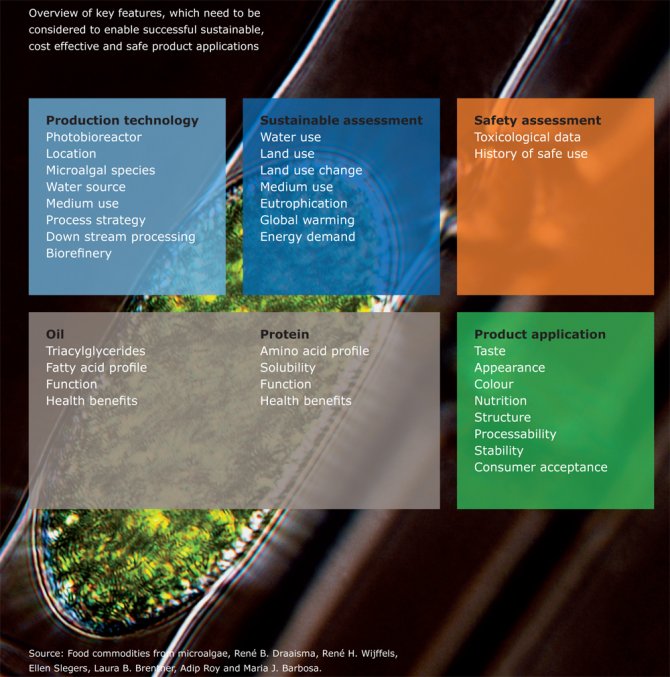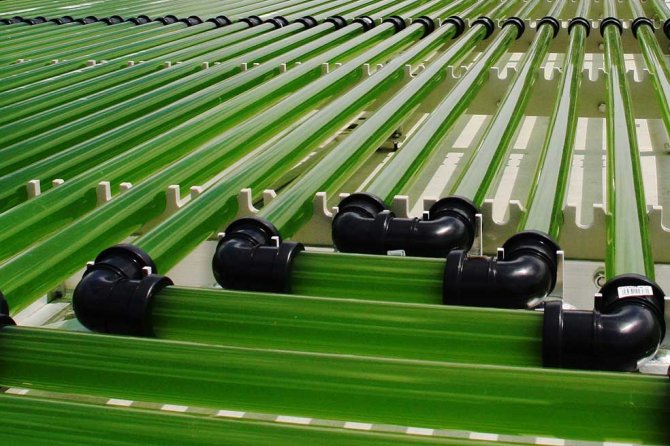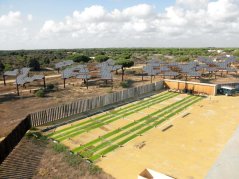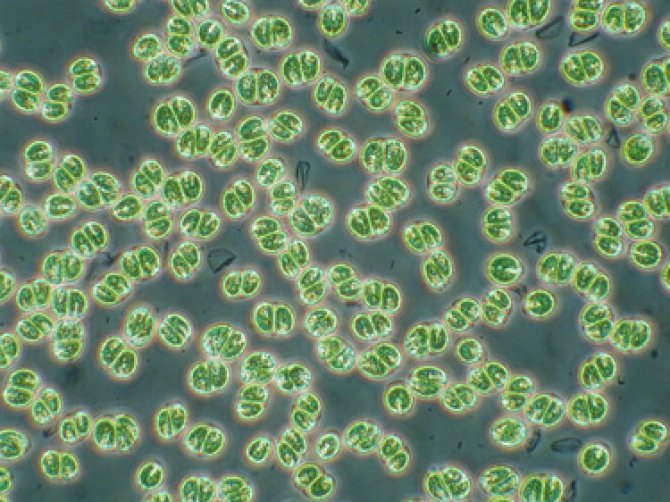Soil-less algae as multifunctional raw material
Some believe that algae, as 'new' crop are the solution for the raw material problem, while additionally it does not necessarily compete with agricultural land.
The biobased economy is developing rapidly. Within this economic system, plants play a leading role as a supplier of nutrients, energy and materials. It is the potential solution for the time when – for whatever reason – we no longer use fossil fuels. Biomass can be converted via biorefining into a number of functional chemical compounds, and from there we can theoretically make all currently used commodities. It is not a new concept, but advances in knowledge, raw material shortages, the climate issue and the constantly high price of oil have accelerated the development.
Palm oil in food and cosmetics, fishmeal for fish farming, maize as a basis for biofuels; these are all scarce raw materials that should be handled with care
There are concerns regarding food production being reduced due to the production of crops for processing into biofuels. There is at least one crop that is excluded from the debate about food or fuel, namely algae. Algae are not traditionally a major food crop and do not take up existing agricultural acreage. They do, however, have potential as a source of protein and fat in human and animal nutrition.
Alternative raw material
After two brief periods of increased interest – as a source of protein in the 1950s and as an energy source during the energy crisis of the 1980s – the breakthrough of algae seems definitive since Al Gore’s ‘An Inconvenient Truth’ in 2006. Gore advocated a careful relationship with the planet and a reduction of CO2 emissions. With this increased awareness, biomass caught the attention of scientists, companies and politicians as an alternative raw material. It also resulted in renewed interest in the possibility of extracting fats, fish oil and protein from algae. This combination made algae interesting to the food industry and energy companies. Today algae serve as a source for protein, glucose, fats, pigments, omega-3 fatty acids and biofuels. They are not food or fuel, they are food and fuel.
René Wijffels, professor in Bioprocess Engineering started his research into algae in 1997, based on the idea that it would enable increased biomass production with the same amount of light. The majority of plants only use one percent of the sunlight that reaches them; most algae absorb twice as much. But this did not satisfy Wijffels who sought to move towards the theoretical maximum of ten percent. In 2008 he achieved 6.5 percent in optimal summer conditions. For this breakthrough, Wijffels’ research group used test facilities in Spain. Nowadays Wijffels and his colleague Maria Barbosa have an AlgaePARC at their disposal at the Wageningen campus where they can develop the best possible conditions.

Cowboys
Wijffels is reluctant to make predictions about the future: “There used to be cowboys who promised that they could resolve the energy issue using algae within two years. We have been telling a more realistic story since the outset. As an independent party, we are also more able to list the disadvantages.” These currently include the high consumption of energy, water and phosphorus. Progress is further held back by the slow upscaling and industrialisation of the processes. Moreover, it is still difficult to extract CO2 as a growth substance from the atmosphere.
The combination of fuel and food gives algae unprecedented potential whereas the production of biofuels from algae also supplies a useful ‘waste product’: Protein. A complete switch to biofuels in the EU, if based on algae, could provide as much protein as a by-product as Europe currently imports as soya protein. Despite this obvious win-win situation, the world needs breakthroughs in algal research. The industry is however, interested as is illustrated by its involvement in the AlgaePARC. Companies from the oil sector and the food industry (human and animal food) support this pilot research facility within Wageningen UR and keep in close contact regarding the developments.
2x more with 2x less
Sustainability is a precondition for scientists and companies alike. Palm oil in food and cosmetics, fishmeal for fish farming, maize as a basis for biofuels; these are all scarce raw materials that should be handled with care. Algae could be a welcome addition or replacement. They also contribute to Wageningen UR’s goal to double food production while reducing the environmental impact under the motto: ‘2x more with 2x less’.
When it comes to locations, Wijffels is looking both south and towards the sea. There are already possibilities in the Sahara, where algae cultivation would be possible with salt groundwater. Sea water could be used at other locations, like the coastal desert at the border of Chile and Peru and around the Red Sea. Growing algae and seaweed at sea is another attractive option as well, although it still faces many technological and financial hurdles.
The contribution of algae to global food security is definitely an option in certain tropical countries where the standard diet is monotonous, based on carbohydrates from maize and other grain. With the protein from an algae installation, the local population can avoid hidden hunger. The direct use of algae as food in fish farming, and especially tilapia, also contributes to controlling food shortages.


